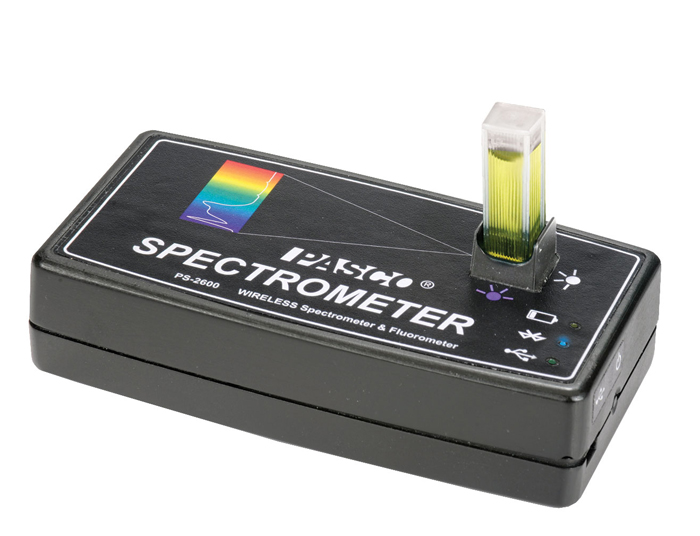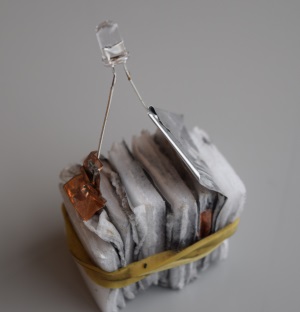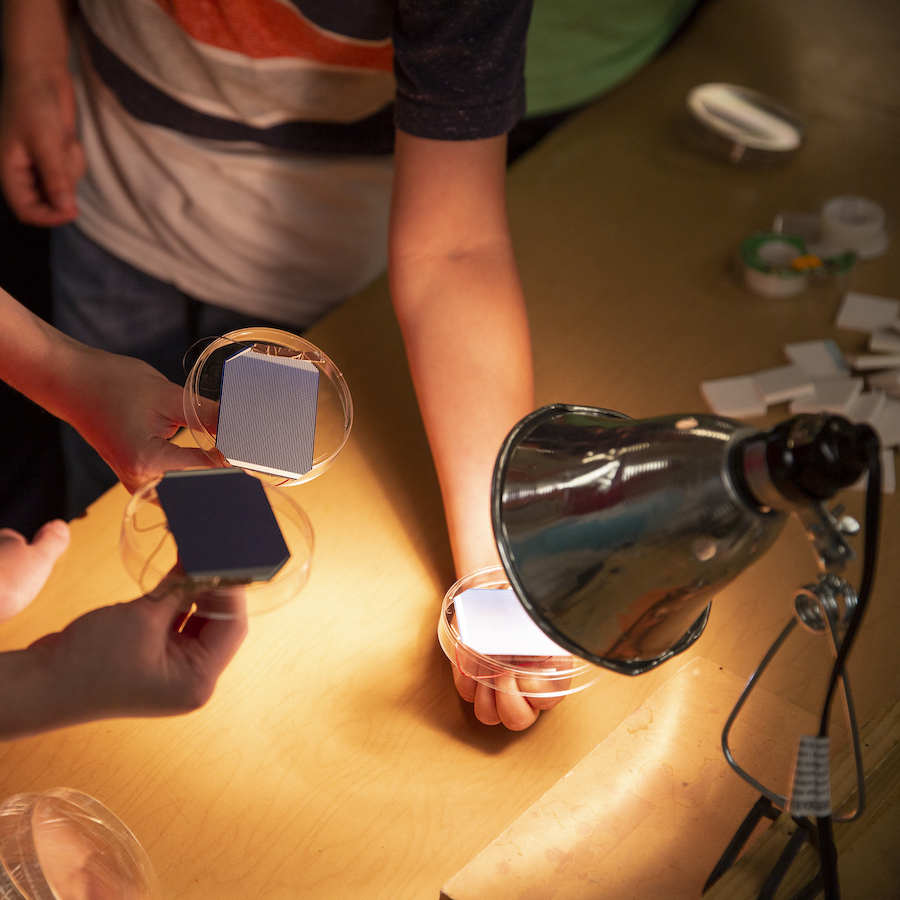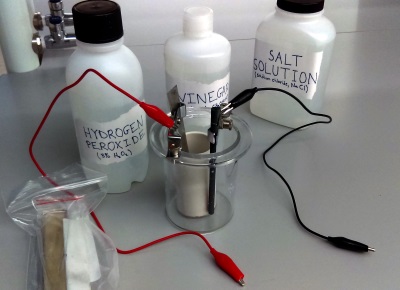Absorption and Fluorescence with USB Spectrometer
[vc_row][vc_column][vc_column_text] Overview: [caption id="attachment_4862" align="alignright" width="297"] A USB spectrometer measures light that passes through a solution in the cuvette.[/caption] Students explore how different materials absorb and emit light, then measure spectra with a desktop spectrometer. Essential Question: How do we measure the absorption and emission of light? Background: Light travels from here to there like a really fast bullet. When we see a light turn on, there are particles of light called photons that travel from the lamp to your eye. Light goes so fast that in one second, light travels 180,000 miles! That's traveling across the US 72 times in one second! All light is made of photons, when a...
Aluminum Air Battery
[vc_row][vc_column][mkd_section_title title="Aluminum Air Battery" title_size="large" title_color="" title_text_align="" margin_bottom="" width=""][vc_column_text]Storing energy is one of the biggest challenges facing the scaling up of clean energy technologies. The goal of this activity is to allow students to design and build a battery using their understanding of oxidation and reduction reactions. Students will use everyday materials, including aluminum foil, salt water, charcoal, and copper foil, to build a non-rechargeable battery cell capable of powering an LED. Students should be familiar with balancing equations using half-reactions. Essential Questions: Can energy be captured and stored? How can we capture the energy released from a chemical reaction to produce useful electrical power?[/vc_column_text][/vc_column][/vc_row][vc_row][vc_column][mkd_accordion style="toggle"][mkd_accordion_tab icon_pack=""...
Solar Spinner
[vc_row][vc_column][vc_column_text]Build a device from a solar cell, motor and petri dish. It demonstrates conversion of solar energy to electricity and then to mechanical energy.[/vc_column_text][vc_empty_space height="30px"][vc_hoverbox image="18217" primary_title="" primary_align="left" hover_title="QUESTION" shape="square" el_width="30" align="left"]How do we build a toy that uses solar energy to make it spin?[/vc_hoverbox][vc_empty_space height="40px"][mkd_accordion style="boxed_toggle" el_class="GLOWING COLORS"][mkd_accordion_tab icon_pack="" title="Background"][vc_column_text]The front of the solar cell is connected to one wire of the motor, and the back is connected to the other. This makes a complete circuit. It is very important not to let the leads that come from the top of cell to touch the tape coming from the bottom of the cell...
Glowing Colors
[vc_row][vc_column][vc_column_text]Students explore how different materials absorb and emit light of different colors[/vc_column_text][vc_empty_space height="30px"][vc_hoverbox image="18248" primary_title="" primary_align="left" hover_title="QUESTION" shape="square" el_width="30" align="left"]How can materials make light of different colors?[/vc_hoverbox][vc_empty_space height="40px"][mkd_accordion style="boxed_toggle" el_class="GLOWING COLORS"][mkd_accordion_tab icon_pack="" title="Background"][vc_column_text]White light is composed of lights of different colors. Each color is carried by a light moving as a wave. Different materials reflect light of different colors, or they absorb light of other colors. If an object appears red, it because all the other colors besides red are absorbed and only red light is reflected. Some materials create light when they are energized by light, electricity, heat or by chemical reactions. This...
A Battery from Household Chemicals
Background We use batteries to power lots of different things, from TV remotes to computers. Some cars even run on batteries instead of gasoline! So where does all that power come from? All batteries, big and small, get their power from chemical reactions happening inside of them. When certain types of chemicals react, they give up electrons which we harness to produce electrical power. When you turn on a laptop computer, or press a button on a TV remote, you’re making chemistry happen! While the two ends of the battery are connected, and electricity is flowing, the chemicals can react until they’re all used up,...
- 1
- 2







